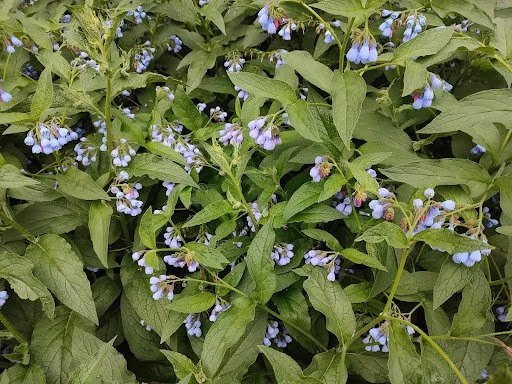What's Underneath the Trees? Soft Landing Zones and Why They Matter
In woodland areas, the majority of caterpillars live in trees, and the plants that grow beneath them catch fallen caterpillars and serve as shelter for cocoons. In neighborhood areas, however, open ground under a tree leaves the insects unsupported and exposed. Here, we’ll share how to plant a soft landing garden in your yard to support the local caterpillar population and enjoy the beauty of a nature-informed landscape.
What Is a Soft Landing Zone?
A “soft landing zone” is a garden of shade-tolerant plants under a tree that serves to catch caterpillars that drop from the branches and provide shelter to some species to create their cocoons. Trees each host a huge number of caterpillars, and when wind, rain, predator attempts, or loss of grip knocks any one to the ground, a layer of foliage helps break the fall.
Trees and Butterflies in Nashville
Trees are the habitat of many types of caterpillars, serving as their home until (and after) they metamorphose into either a butterfly or a moth. Some trees sustain caterpillars of many kinds, while others have specialized relationships with particular species of butterflies and moths. Planting a hardy shade garden helps the caterpillar population of a tree specimen survive to adulthood and go on to provide essential pollinator services to the local ecosystem.
Some of the most common Nashville butterflies have exclusive relationships with certain kinds of trees: the zebra swallowtail relies on only pawpaw trees for egg-laying, and the caterpillars eat only pawpaw leaves. Dogwood species are similarly essential hosts for the spring azure butterfly, while the catalpa tree is the singular home to the caterpillars of the catalpa sphinx moth.
On the other hand, certain keystone trees, such as oaks, maples, hickories, cherries, and elms, host hundreds of species of caterpillars (and the majority of a local caterpillar population), while many species of butterflies and moths, such as the eastern tiger swallowtail, the red-spotted purple butterfly, and the promethea moth, are tree generalists.
These specialized and generalist relationships are just a few examples of the ecological importance of planting and preserving different types of native trees and plants for butterfly and moth survival, including creating supportive conditions for their caterpillars.
How to Plant a Soft Landing Garden Around Your Tree
A soft landing zone extends from the trunk, outward: most caterpillars fall near the base of the tree, but many also drop toward the drip line (as far as the furthest reach of the branches). If a garden only extends a few feet from the trunk, it still helps, but expanding toward the drip line provides more safety and habitat. Shade-loving plants should be placed closer to the trunk, while flowering perennials that like spotted light can be planted in the further reaches of the soft landing zone.
Some native Tennessee plants that are good for a soft landing garden include ferns, blue woodland sedge, woodland phlox, spicebush, wild ginger, smooth hydrangea, wood aster, coneflower, astilbe, sweetspire, and Virginia bluebell. Learn more about gardening with Middle Tennessee’s native plants by visiting the Neighbors For Native Plants website, and browse their fall plant sale!
To dive even deeper into the use of native plants for landscaping in Nashville, check out the Wild Ones Middle Tennessee Chapter: they offer monthly meetings, educational programs, and local events such as hikes and tours of native plant gardens. The group aims to connect people with native landscapes and encourages community involvement in preserving biodiversity.
Popular non-native, shade-tolerant ornamentals can be planted as well for a supportive landscape contribution: hosta, heucherella, and pachysandra add to a dense, leafy groundcover.
Planting Trees For Habitat Benefits
Soft landing gardens add to a layered, functional landscape! They stabilize soil, bloom for pollinators, and provide cover for other wildlife. The survival and reproduction of caterpillars is fundamental to the local food web, where caterpillars are a main food source for many birds, in particular.
Whether planting new plants around a tree or planting a new tree, we can choose species that create supportive environments for wildlife, which in turn nurtures the health and beauty of the tree canopy.
If you have open space for a tree that can host caterpillars, choose a flowering pollinator-attractor like a tulip poplar, or a wildlife-hosting powerhouse like a bur oak. A soft landing garden can be installed after a tree has been in place for at least three years, the period of time it takes for a newly planted tree’s roots to get firmly established.
Browse the Nashville Tree Conservation Corps’ tree sale for a range of native trees that can enhance the ecological value of your yard! You can also donate a tree for us to plant somewhere in the city, and sign up to volunteer and help us plant.
We accept and appreciate financial donations as well: as a non-profit, we rely on private contributions to fund our mission, and we’re grateful for the ongoing support that allows us to work for Nashville’s trees!
Sign up for our email newsletter for regular updates on local tree news and care tips, and check out our Linktree for more ways to connect.

